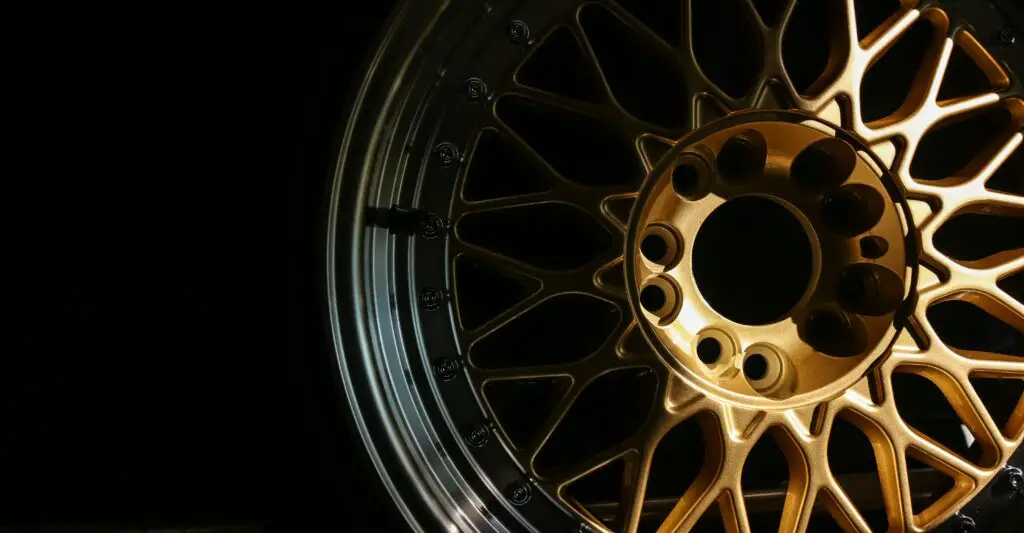Spray painting is not just fun but also an excellent option to save money. However, many DIY enthusiasts struggle with painting when the temperature drops. If you’re wondering, ‘Can I spray paint in cold weather?’ You’re not the only one.
Winters can present a challenge for spray painting projects, nevertheless, you can always paint in cold weather as long as you follow specific steps. Controlling the temperature is the best way to get good painting results, but adequately prepping and priming the surface is equally important.
If you want to beat the odds and start a spray paint DIY job when the temperature is below 50 degrees Fahrenheit, follow my tips and tricks to get the desired results.
How cold is too cold for spray paint?
The best temperature for spray paint is between 50 and 90 degrees Fahrenheit, and anything below 50 degrees is considered too cold for spray painting outside. However, there are ways to tweak the conditions and make them favorable for your project.
What are the problems you can expect when spray painting in cold weather?
Cold weather painting can result in the following problems:
- Color difference
- Cracking of paint
- Water spots on latex paints
- Bubbles and bumps on the painted surface
- Uneven and erratic spraying
Before we get into the details of ‘how do you spray paint in the winter,’ let’s understand the problems you must overcome in cold weather.
1. Difficulty in paint adhesion
Your spray paint’s performance is affected by temperature and moisture. The first problem will be paint adhesion when it’s too cold outside. If the paint inside the can and the application surface are both cold, you can expect to run into problems.
2. Longer drying time
Colder temperatures are often accompanied by fog which means excessive moisture in the air that you can’t control. Your paint will take much longer to dry in winter than in summer. Fortunately, there are ways to speed up the paint’s drying time.
3. Changes in paint consistency
If your spray can is stored in a cool place, it is likely that the paint has become much thicker due to the temperature or has frozen altogether. For this reason, you may not get the same finish from the color as you’d get in a warmer temperature.
4. Spray paint nozzles clog up
Winter is the perfect time for spray paint nozzles to get clogged. If you’ve not stored your cans in a warm place or cleared the nozzle and tube before storing them away, there are high chances of the nozzle clogging up.
Here is how to avoid spray paint nozzle from clogging up for a better understanding to avoid getting into this situation in the first place.
How to paint in cold weather
While warmer temperature is ideal for spray painting, it doesn’t mean you must give up painting altogether when it gets chillier. You can follow these steps to get a uniform paint finish despite the weather.
Step 1- Clean the surface
One of the major reasons spray paint isn’t recommended in winter is that it doesn’t adhere to the surface properly. Another factor that hinders paint’s ability to stick to the object is dirt and grime. Therefore, clean the surface thoroughly to improve your chances of a good paint job.
Prepare the surface by washing and sanding it to remove dust, grime, or a glossy finish. However, make sure that you dry it before moving on to the next step to get the maximum benefit from the clean-up.
Step 2- Check your paint’s condition
Cold weather affects paint in many ways—the lower the temperature, the thicker the paint’s consistency.
If the paint is too thick, its spray mechanism might not work well.
Always check your paint’s temperature before you start painting. If it feels cold to the touch, try to make it warmer with a paint heater. In case you don’t have one handy, you can fill a bucket with warm water and place the can inside it.
Raising the temperature of the spray paint can help preserve the contents in their original state. The additional warmth won’t cause your paint to solidify, even if you use it outdoors.
Step 3- Check the surface’s temperature
Since cold weather can create problems for paint adhesion, you should rely on a surface thermometer to check the surface temperature before applying paint. If it is below 35 degrees, wait for the weather to get slightly warmer. Ideally, the temperature should be above 35 degrees for two consecutive days, even after the paint job.
However, if you’re dealing with smaller objects, you can tweak their surrounding temperature by painting and drying them inside the house.
Step 4- Apply a primer
It may not be necessary to prime the same surface in summer, but skipping the primer in cold weather is a recipe for disaster. Remember to apply two to three coats of primer on the surface to help with paint adhesion.
Some paints are advertised as self-primers, but you should use a separate primer to increase your project’s chances of success. Think of it as a protective layer for the painted surface that allows the paint to stick better and dry quickly.
Step 5- Start spraying
Check the temperature of your spray paint and test it on a piece of cardboard to ensure the spray quality before proceeding with the final surface. This will also help reveal if the spray paint nozzle is clogged or good to go.
Choose a well-ventilated area for the project. Keep a good distance and start spraying your surface in fluid motions. If the can is warm enough, you should not have a problem with the paint’s consistency. Thin and even layers will dry quickly in cold weather so remember to keep the can moving to avoid over-saturation at any point.
Step 6- Dry the Surface
When the temperature is over 50 degrees, you don’t have to worry about drying your surface because nature will do that job. But cold weather warrants special attention when it comes to the drying time of the object.
Usually, when you want your paint to dry properly, you avoid moving the object too much when it is wet but in this case, giving it the ideal temperature is more important. You should move your painted surface into a temperature-controlled environment to reduce its drying time.
There are other ways to make spray paint dry faster, so you should definitely give them a try to finish the job quickly.
If you’re working on a project outdoors, the weather might not be ideal for the paint to cure on its own. Therefore, you will have to heat the surface manually.
Step 7- Clean your equipment
Although this step is necessary regardless of the weather conditions, it should not be overlooked at all in winter. As the paint in the can quickly harden because of cold temperatures, cleaning your equipment with just soap and water might not work.
You should remove any hardened paint from the spray paint can’s exterior and nozzle with an alcohol-based solvent or paint thinner. Turn the can upside down and keep spraying until clear air starts coming out. This is a sign that the can’s tube is clean and there are no chances of paint getting stuck in the nozzle or tube.
Finally, how you store your spray paint cans greatly affects their consistency and longevity. You can always look for ways to prevent your spray paint nozzle from clogging and store them properly.
Tips for spray painting in low temperatures
Following the correct procedure is important, but the tips mentioned below will help you through the painting process.
- Keep your paint and object indoors until just before use
You need an adequately ventilated area to spray paint an object, but that doesn’t mean you should take the object and the paint outdoors even before you start working. Instead, keep them stored inside at room temperature until immediately before painting.
- Bring the object inside after every coat
We have talked about bringing your object into a temperature-controlled environment after you’ve painted it. This means you should take it indoors after every coat of paint, not just the final one. While it may seem like a lot of work initially, it is the best way to dry your painted object.
- Heat the work area
Depending on the surface you want to paint, you can look into options to heat your work area. Creating a warm environment during spray painting will help the paint perform better and speed up its drying time. Consider setting up a tent around your project or renting a large air replacement unit to increase the temperature of the area you will be painting.
- Choose a paint that works in cold weather
Generally, spray paints are designed to work in temperatures north of 50 degrees, but you can always search for other options that have more forgiving surface temperature needs when being applied.
- Account for weather changes
Always remember to take into account weather patterns before you start a project. The sun, wind, and rain can easily affect your project’s drying time, so make sure to check the forecast beforehand. If your paint is rated 50 degrees and the temperature gets lower, you should wait until you have a few days of above 50 degrees weather.
The best spray paint for cold weather
Lower temperatures and higher humidity levels can extend paint’s drying time; therefore, selecting a color that takes little time to dry in cold weather is crucial. Water-based paints don’t perform well under extreme weather conditions, whereas oil-based paints are less sensitive to cold weather.
Water-based paints can freeze at temperatures below 32 degrees, and their chances of adhering to a cold surface are relatively low. On the other hand, solvent-based paints do not freeze at low temperatures and are more likely to be able to stick to a cold surface.
Hence, oil-based paint products are generally better suited for cold-weather spraying.
FAQs
What happens if you spray paint below 50 degrees?
If you spray paint in lower temperatures, there are chances that:
- The paint layer will crack
- Color will not be uniform
- The paint will not stick to the surface
- It will look like a poor touch up
Can you let the spray paint dry in cold weather?
Cold weather is not ideal for drying spray paint; therefore, you need to increase the temperature around the surface to speed up the drying process. Leaving the wet surface in cold weather would prevent the paint from drying completely.
Is spraying primer in cold weather necessary?
The problem with spray painting in cold weather is that the paint doesn’t adhere to the surface properly, resulting in the paint cracking and peeling. The best way to avoid it is by using a primer before the paint application and increasing the chances of a successful cold-weather paint job.
Are 35 degrees too cold to spray paint?
A temperature of 35 degrees is too cold for spray paint. Moving your object and spray paint to a warmer location (indoors) or a temperature-controlled area would be best.
Conclusion
Spray painting in the cold comes with its unique set of challenges. You need to be mindful of the weather forecast and make sure you have the right supplies and techniques to paint your desired surface. Remember that excess moisture, ice, or snow in the air can significantly increase the paint’s drying time. Therefore, plan ahead to make your painting job easier and more fun.


